Number Ball Puzzles
These number ball puzzles from Naoki Inaba involve placing the specified numbers in each row and column. Cells with circles must be used. Cells with X’s may not be used.
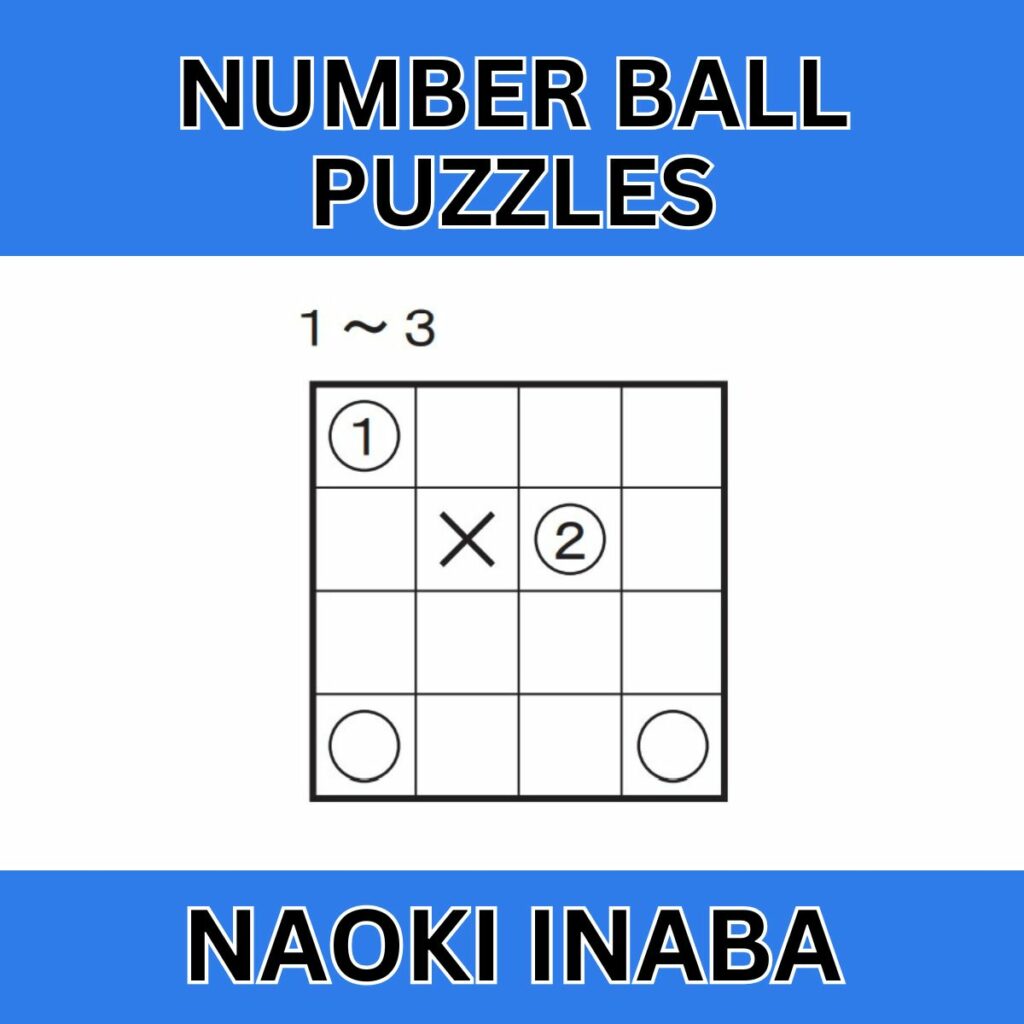
What are Number Ball Puzzles?
Number Ball Puzzles (ナンバーボール) are the brilliant creation of Naoki Inaba, prolific Japanese puzzle creator. I discovered these puzzles on Inaba’s website, but the instructions were written in Japanese.

Each number ball puzzle involves a square grid. Some of the squares contain numbers in circles. Other squares contain empty circles or x’s.
Instructions for Solving
Here’s my translation of the original Japanese rules: Each row and column must contain balls with one of each of the numbers in the given range. Squares containing a circle must be used. Squares containing an x may not be used.
Inaba provides an example of a puzzle and its solution to help ensure that you understand the rules before beginning.
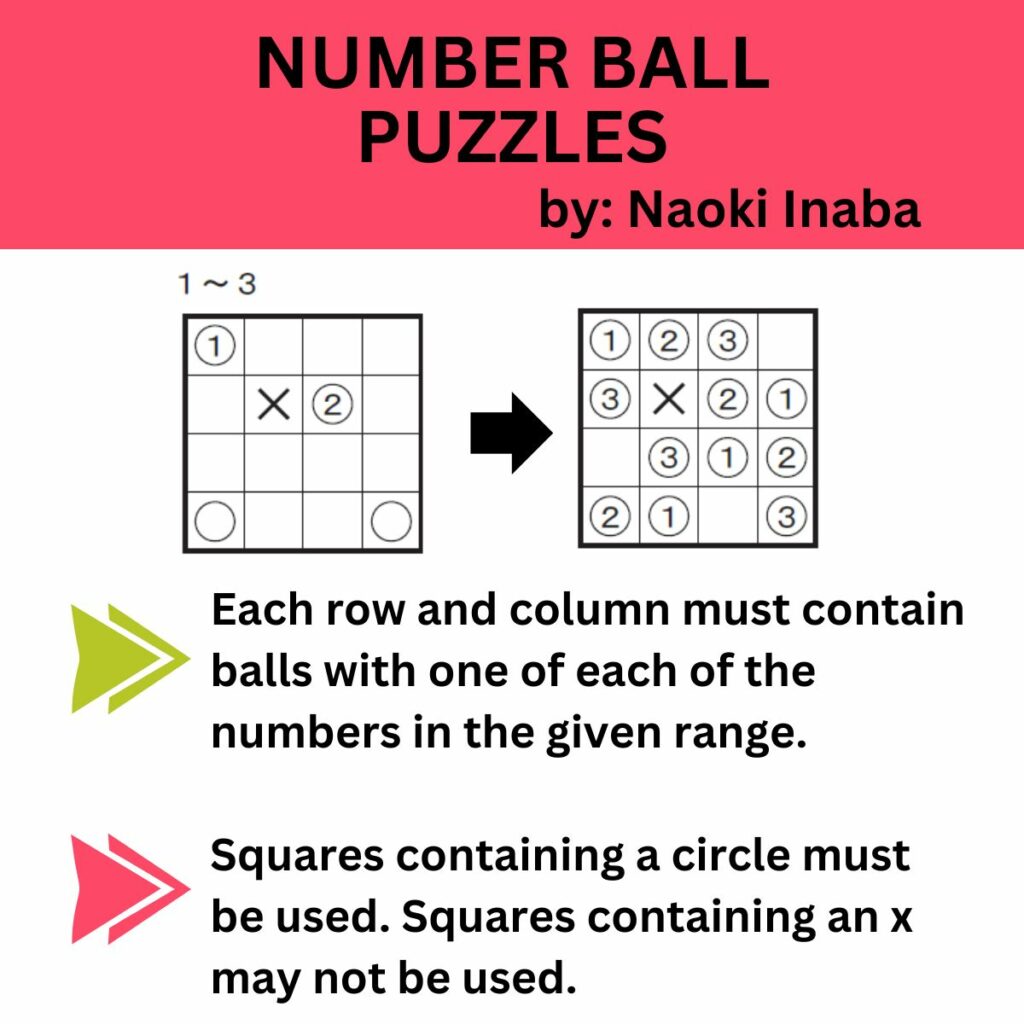
My Experience with These Puzzles
I was really hoping that I had discovered a new type of puzzle to use in my classroom with my math students. Then, I tried to solve the puzzles myself. I found them much harder than I expected.
On my first day of puzzling, I managed to solve exactly ONE of the number ball puzzles. Of the five puzzles provided by Inaba, I could only work out a solution to the SMALLEST puzzle.
The next night after the toddler was put to bed, I pulled my clipboard of puzzles back out. This time, I was able to solve the next three puzzles. But, the last and largest puzzle proved to be a huge stumper. I tried several methods of solving it and ended up doing a lot of erasing and starting over in hopes that I would find some sort of clue that I had overlooked.
Tonight, I decided to have one more go at solving these number ball puzzles. I thought that maybe I had overlooked some strategy in solving the smaller puzzles that I needed to solve the largest puzzle.
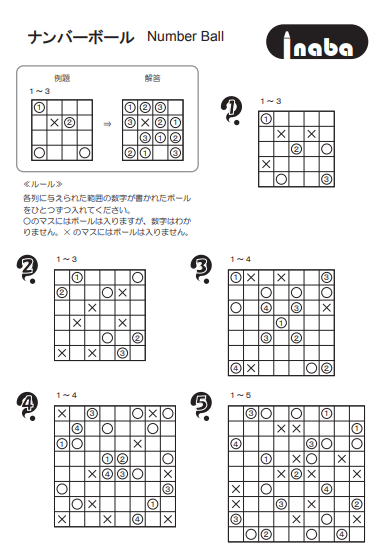
I printed off a fresh set of number ball puzzles. Then, I set about to re-solve the puzzles I had previously solved the previous two nights. I did make one slight change. I started by solving the small example puzzle that Inaba had originally provided a worked solution for. I made my way through each of the previously solved puzzles. My experience made the puzzle solving much smoother, but I still found them to be quite tricky at times.
Then, I tackled the largest puzzle. Halfway through solving it, I had an epiphany that ended up helping me break through my puzzle solving roadblock.
Printable Version of Number Ball Puzzles
I really enjoyed solving these puzzles, but I think there are many other puzzles by Naoki Inaba that are more suitable for use in the secondary classroom. Still, I am sharing my English translation of these puzzles here on my blog in case you want to try your hand at solving these yourselves.
I found them a very satisfying puzzle to solve. I think you will, too.
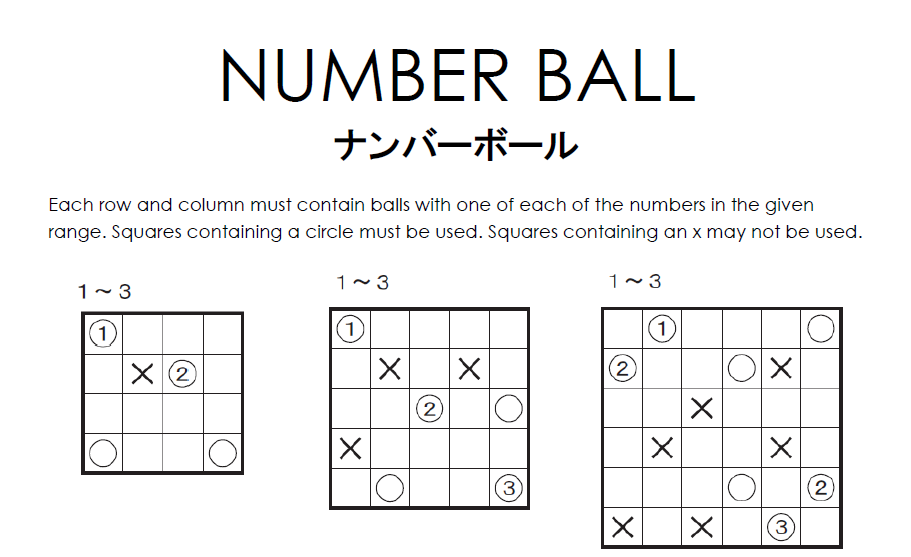
Instead of including a worked example like Inaba did in his PDF of the puzzles, I have placed the example puzzle as the first puzzle to be solved.
If you do want to try these with kids, I think the first two puzzles are quite accessible to students. The third and subsequent puzzles will likely give your students much frustration. Though, maybe they will discover a solving method that I somehow overlooked?
I have a feeling my students will take their normal approach to solving such puzzles and bypass the logical thinking step to jump straight into writing random numbers into boxes…
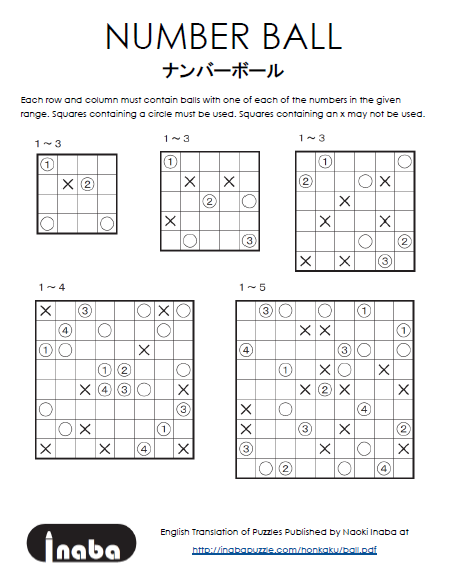
I would like to emphasize that you should try these puzzles out yourself BEFORE using them with students! These puzzles are difficult, but they are not impossible. Productive struggle is a good thing. You need to know your students and how much struggle is productive and how much struggle is overwhelming/crippling.
English Translation of Naoki Inaba’s Number Ball Puzzles
Want more puzzles like this? Check out this page where I have collected many of Naoki Inaba’s inspiring math puzzles.
Puzzle Solutions
Puzzle solutions are available on a password-protected solution page. I do not openly post the puzzle answer keys because one of my goals as a resource creator is to craft learning experiences for students that are non-google-able. I want teachers to be able to use these puzzles in their classrooms without the solutions being found easily on the Internet.
Please email me at sarah@mathequalslove.net for the password to the answer key database featuring all of my printable puzzles and math worksheets. I frequently have students emailing me for the answer key, so please specify in your email what school you teach at and what subjects you teach. If you do not provide these details, I will not be able to send you the password.
Not a teacher? Go ahead and send me an email as well. Just let me know what you are using the puzzles for. I am continually in awe of how many people are using these puzzles with scouting groups, with senior adults battling dementia, or as fun activities in their workplace. Just give me enough details so I know you are not a student looking for answers to the puzzle that was assigned as their homework!

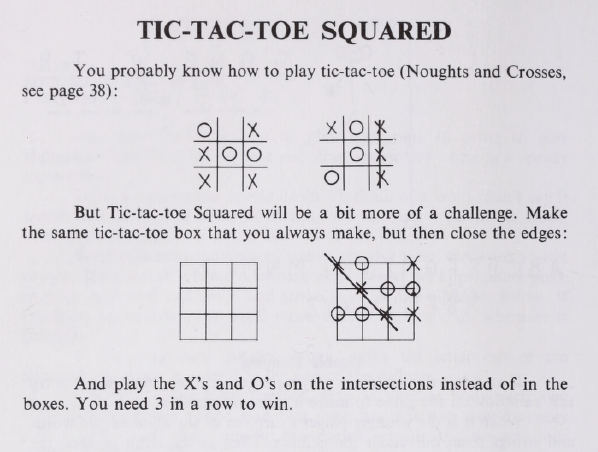
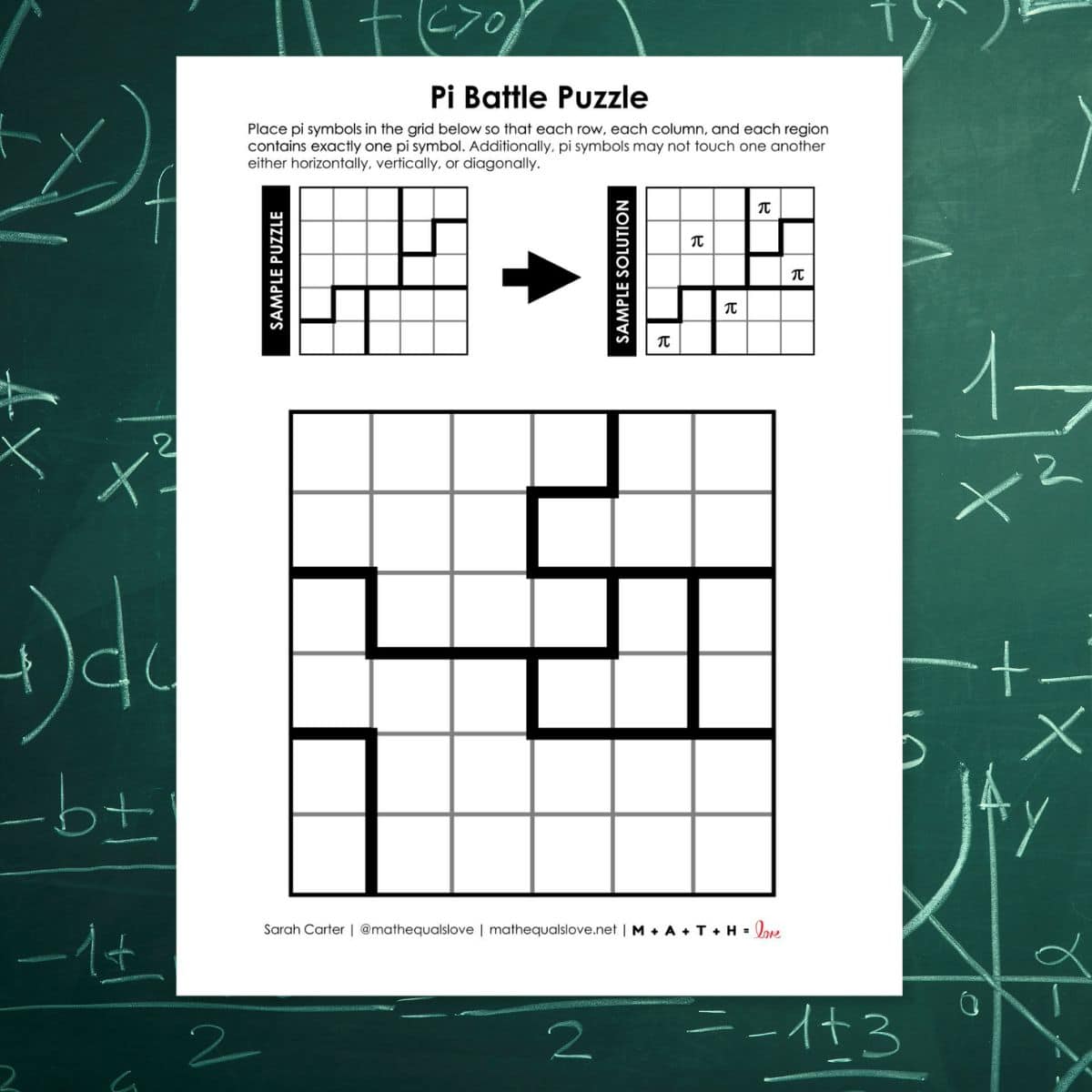

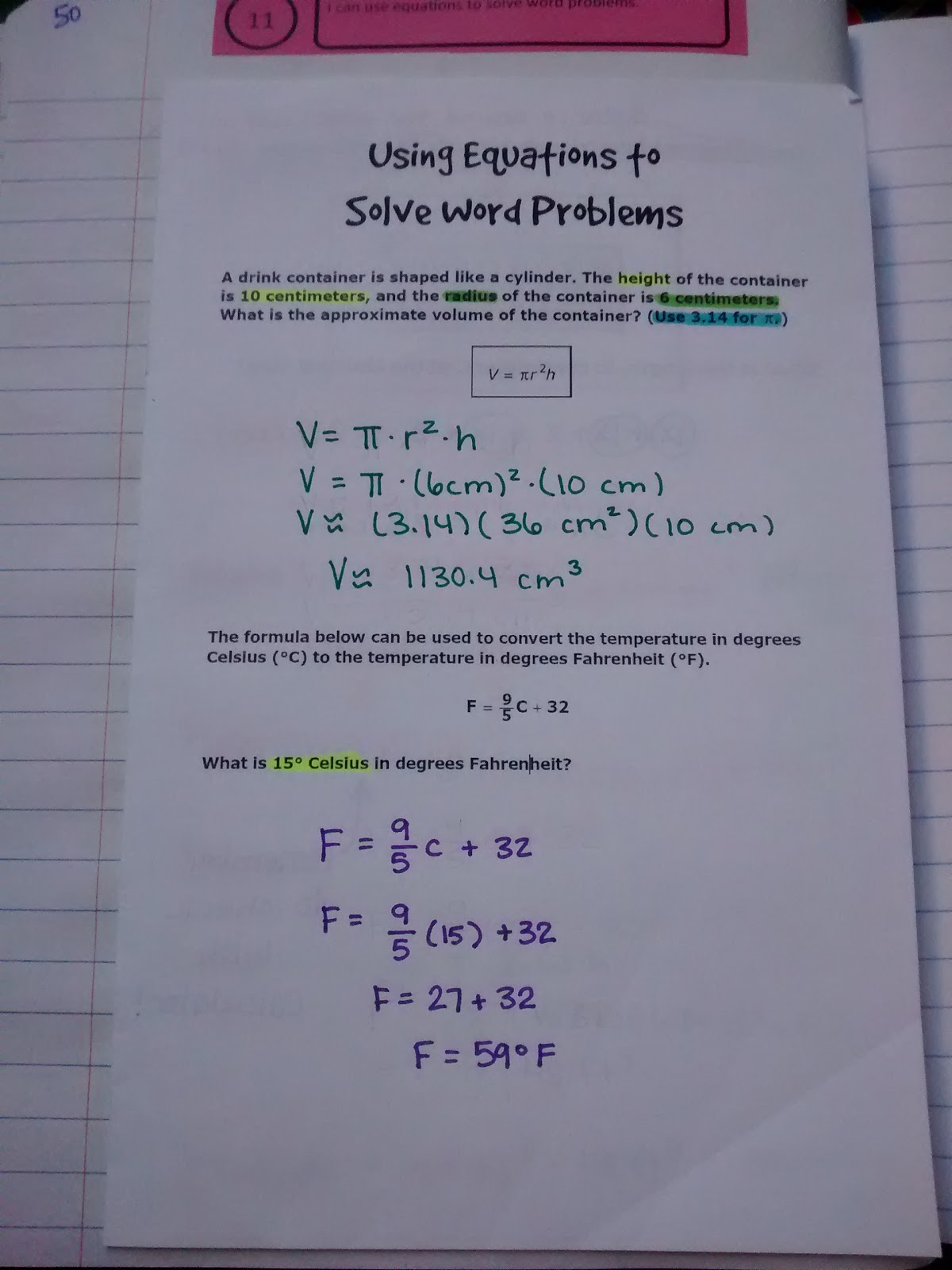
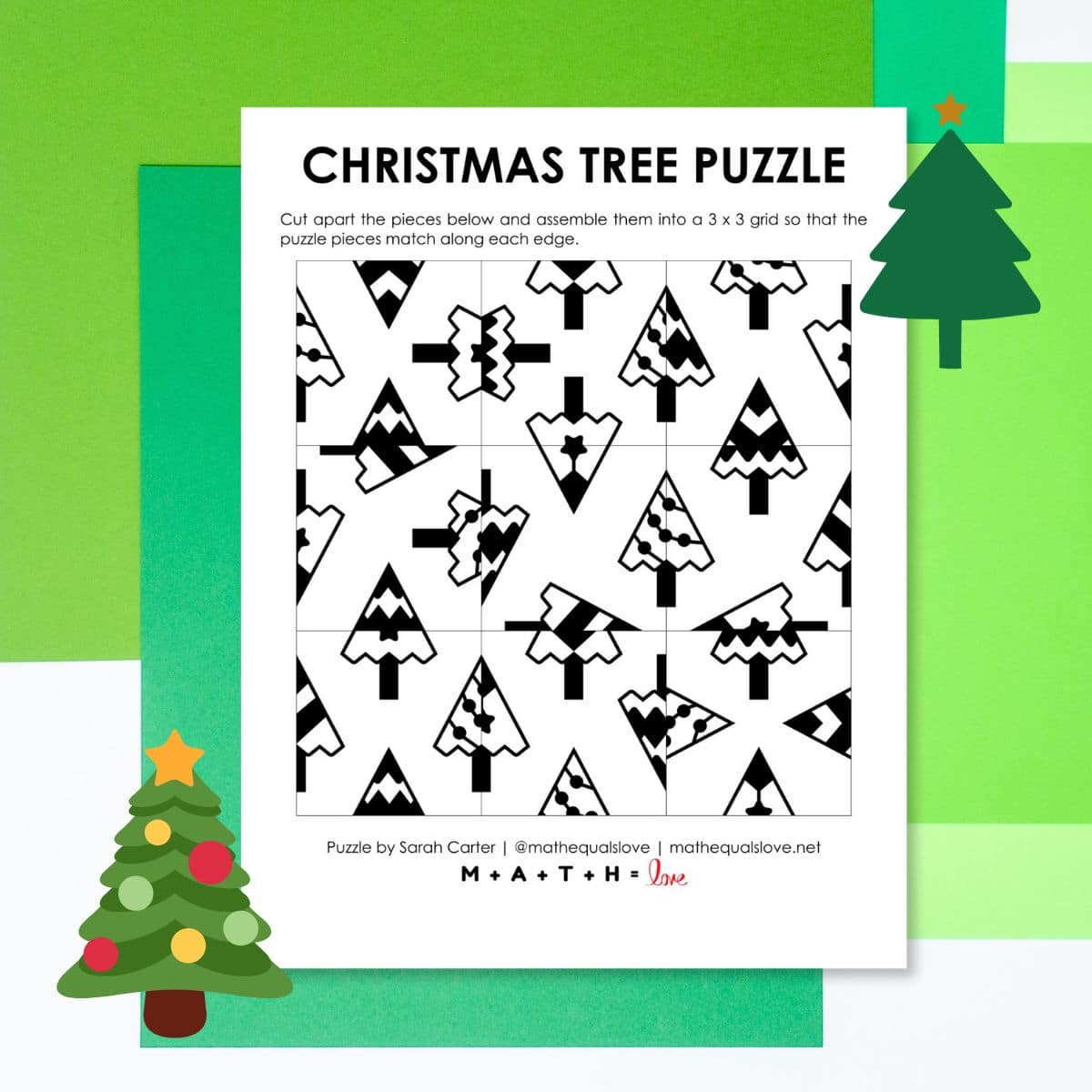
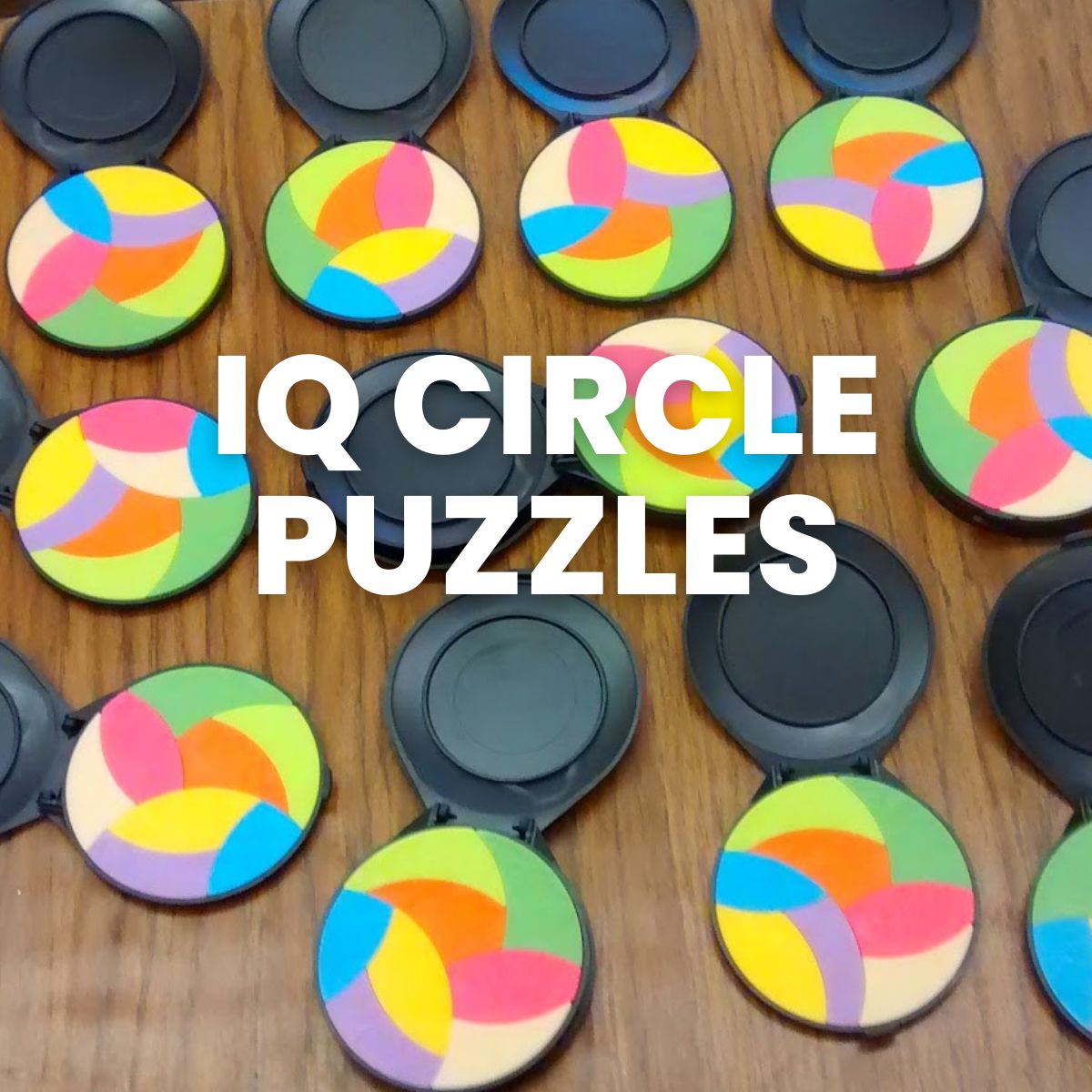
Unless I’m missing something obvious, these puzzles are similar to some I’ve been playing on Sporcle—except these are numbers instead of letters. I’ve been solving them by writing all the possible answers for each square. Eventually, I find one square that can only be one letter and the rest of the rows and columns fall into line.
https://www.sporcle.com/playlists/dvsdab/abcd-grids